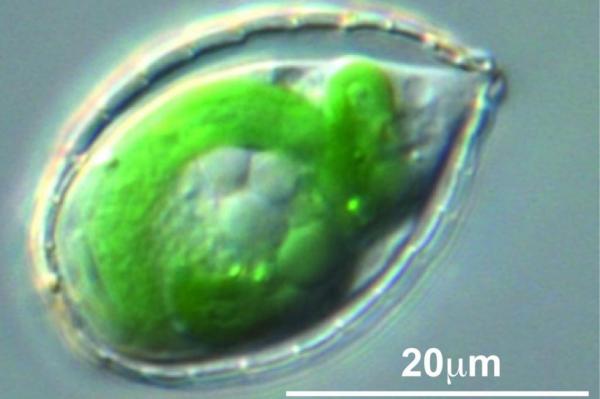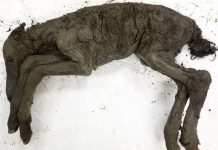
NEWARK, N.J., Oct. 10 (UPI) — Roughly 100 million years ago, an amoeba robbed a bacterium of its genes. Now, researchers finally know how the amoeboid pulled off the heist.
The ancient amoeba Paulinella subsumed the bacterium without harming it. The thief then hijacked the genes necessary for photosynthesis.
“The major finding of the study is the microbial world, which we know is full of valuable genes, can move these genes between organisms according to need,” Debashish Bhattacharya, an ecology professor at Rutgers University, said in a news release. “When a microbe has a gene deficit, it can in some cases fill that deficit by grabbing the same gene from the environment. This shows how fluid microbial genomes really are.”
Researchers have long explained the development of photosynthesis among plants using a similar but much more ancient story of theft.
Some 1.5 billion years ago, an algal ancestor swallowed a photosynthetic bacterium and rendered it a chlorophyll-producing plastid.
Plastids are small organelles with their own DNA and specific functions. Chloroplasts are devoted to producing green pigment, which absorbs the sun’s energy and makes photosynthesis possible.
This type of theft-by-absorption is called endosymbiosis. The theory evolved from an investigation into Paulinella chromatophora conducted by German naturalist Robert Lauterborn in the 1890s. Lauterborn noticed the amoeba had turned plant cells into its own chlorophyll-producing plastids.
For nearly a century, scientists were unable to locate a similar Paulinella amoeba or culture one in the lab. Two decades ago, German scientist Michael Melkonian finally did. More recently, advancement in genomic analysis allowed for a thorough investigation of the unique amoeba.
The latest research solves one the problems with the theory of endosymbiosis. Until now, scientists couldn’t understand how stolen genes don’t become severely deformed over time, as they are unable to share genetic material with their relatives once absorbed.
The new analysis suggests the amoeba can keep stealing genes to replace lost or damaged code.
“Evolution can find a way, in this case by solving the problem of broken genes by gathering replacement genes from the environment,” Bhattacharya explaine. “Who knows, in a 100 million years or so, the descendants of Paulinella might become the dominant plants on our planet.”
Researchers detailed their investigation of the ancient amoeba heist in the journal PNAS.
“It’s really remarkable that a paper written in a journal 120 years ago actually laid the foundation for this study,” Bhattacharya added. “It’s very rare that a species that is so hard to find and culture starts to play an important role in understanding fundamental processes in cells.”






